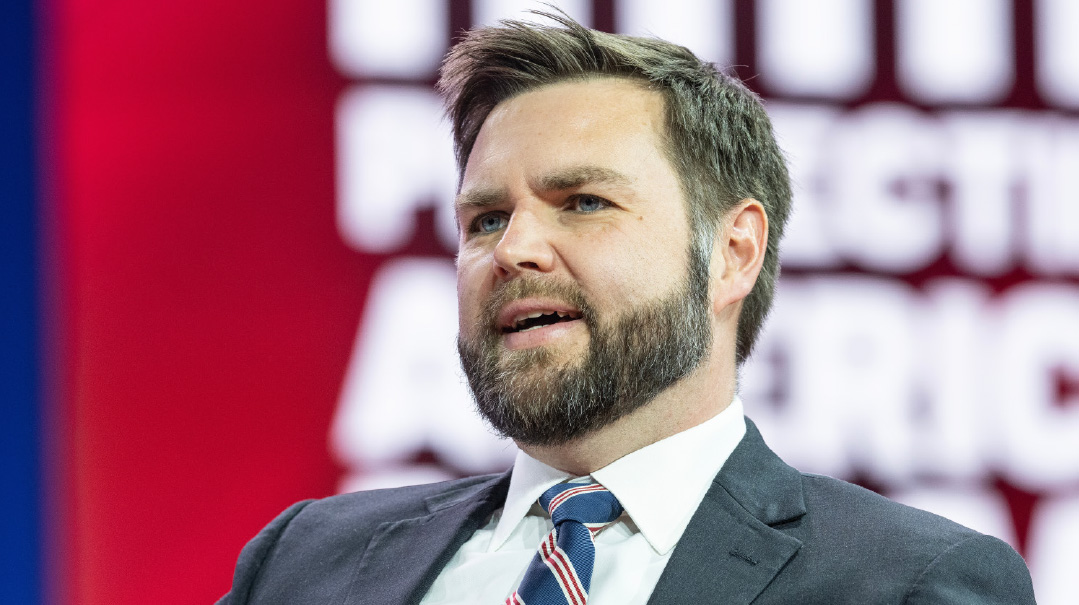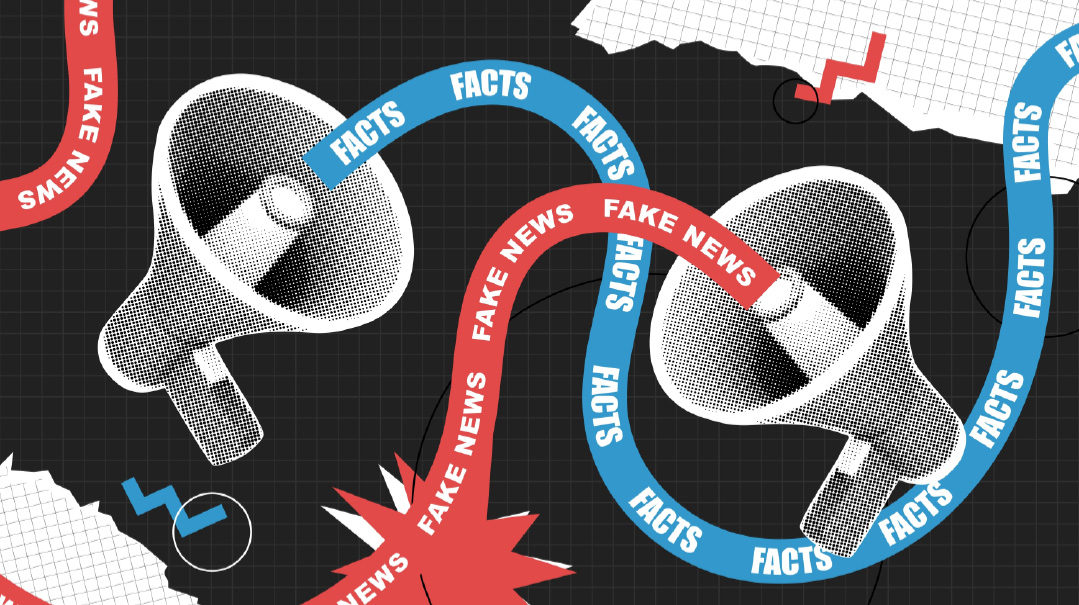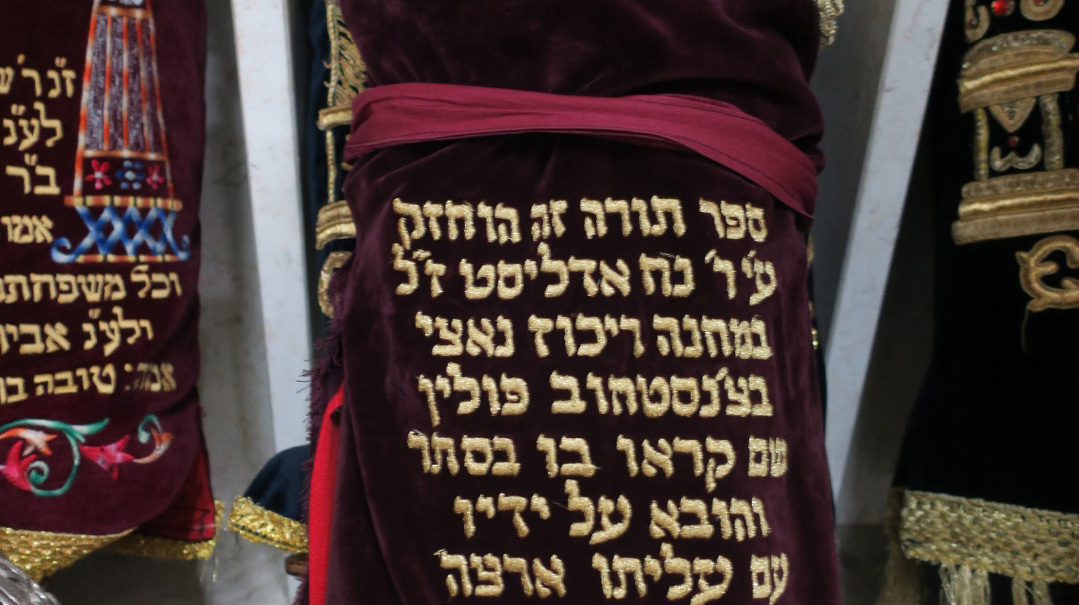Attaching Oneself to the Jewish Story

There is something truly demonic about the millennial fury directed at Jews
I
have just returned with my wife and oldest grandson from a long-promised four-day trip to Vienna and Eastern Europe, including many hours at Auschwitz-Birkenau.
Tours of the latter do not form part of the chareidi curriculum in Israel. Indeed, Jewish history in any form is not part of the high-school age curriculum that my grandson just completed prior to entering yeshivah gedolah. By contrast, approximately one-third of Israeli high school students visit Auschwitz on Education Ministry-sponsored trips each year, though the average price tag of $1,600 places the trips beyond the capabilities of many families.
Of late, however, the trips have become controversial even among secular educators, with some of Israel’s leading high schools dropping them for a variety of reasons — some good and some not so good. Journalist Shmuel Rosner, for instance, writes of the danger of an over-focus on Auschwitz leading to an association of Judaism exclusively with unspeakable suffering. He has a good point.
Left-wing educators dating back to the late education minister Shulamit Aloni complain that visits to Auschwitz instill students with nationalistic feelings at the expense of instilling universal values — i.e., they make them think too much about themselves as Jews.
But the Holocaust was a unique event targeting a specific people, both in terms of the numbers of those killed and the industrial efficiency with which it was carried out. And the Nazis’ success owed to a millennial history of European dehumanization directed at Jews. To my mind, the scariest exhibit at Auschwitz is in block 27 (prepared by Yad Vashem). It consists of newsreels of huge German crowds listening with adoration on their faces to Goering, Goebbels, and Hitler, yemach shemam, rail against Jews as a subhuman race upon whose extermination world salvation depends (in much the same way as the Iranian mullahs do today.)
At the site of the ancient shul of the Or Zarua in Vienna, among the exhibits is one of outraged Catholics expressing their disdain for the former bishop of Innsbruck, Reinhold Stecher, who in 1988 banned the cult of Anderl of Rinn, a Christian child allegedly slaughtered in 1462 by Jewish merchants on a stone bearing the imprint of his lifeless body. Stecher ordered a plaque placed on the so-called “Jewstone,” which reads: “This stone reminds us of the dark deed of blood, as well as, by its very name, of the many sins Christians have committed against Jews.”
Yet Stecher’s efforts were only partly successful. True, schoolchildren in the Tyrol are no longer taken annually to view paintings of the awful crime in a local chapel and to hear of the suffering of Anderl at Jewish hands. But the screen in the museum showed a series of interviews with apparently normal, modern people expressing their absolute conviction in the truth of a “crime” committed almost 700 years ago and only “recorded” for the first time over 200 years after that.
There is something truly demonic about the millennial fury directed at Jews, and, in that demonic fury, something Divine as well. For what about the Jews can explain that hatred other than our stubborn clinging to the Torah? If visits to Auschwitz provoked Israeli students to ask themselves about the source of the loathing directed at them, that would itself be a good thing, albeit too particularistic for the successors of Shulamit Aloni.
Another question that Auschwitz, and a thousand other Jewish sites, ought to provoke is: What is the source of the Jewish strength to endure all that we have undergone as a people? Underneath the Judenplatz in Vienna, for instance, we stood on the site of the ancient Or Zarua shul, where, in 1420, all the Jews still remaining in Vienna — after the poor ones had been expelled, and the wealthy ones, to whom the local ruler owed debts he was unable to repay, had been imprisoned — gathered in the shul. At the conclusion of a three-day siege, they committed mass suicide in order to avoid forced baptism.
What was so powerful about the connection to the Torah that the vast majority of Jews remained faithful to it until modernity? And even in the gas chambers, the SS executioners only knew that no Jew remained alive when no more cries of “Shema Yisrael” could be heard. (That question set in motion my own religious journey.) Whether the trips to Auschwitz arouse that question in many Israeli students, I cannot say. Nor do I know how likely they are to hear on their tours, for instance, the story of young chassidim, who in their last moments on earth, on Rosh Hashanah, pleaded with Rav Tzvi Hirsch Meisels to blow the shofar for them.
IN SUM, AUSCHWITZ does not speak for itself. What one takes away from viewing the various exhibits, the gas chambers, the crematoria, and what lessons one draws for one’s own life, will depend to a very large extent on the context in which the information is provided.
That is why we took as a guide Rabbi Ilan Segal, who has an encyclopedic knowledge of each site we visited and a wealth of stories bringing the personalities and events to life, accumulated while leading over thirty trips to Poland, Ukraine, and other nearby countries. He also happens to be a master mechanech who headed an American seminary in Israel for many years, and who knows exactly what lessons he wants to extract. I accompanied Rabbi Segal on my first trip to Poland and Ukraine five years ago, so I knew how much he would exponentially enrich our tour (in addition to handling all the multiple arrangements).
Of Auschwitz, Rabbi Segal told me: “It is impossible that in a place in which more than a million Jews were murdered al kiddush Hashem there are not nitzotzos [sparks] of kedushah to be absorbed.” And he made those nitzotzos accessible.
I’m a big believer in the importance of attaching to the Jewish story and of feeling oneself part of a people with a very long history. While most of what I have written on the subject concerns nonobservant Jews, I’m no less convinced that even for the most dyed-in-the-wool FFB, a feeling of connection to the Jewish People throughout history is essential.
For those deeply involved in Torah learning, that connection is deeper than mere history. A modern Frenchman may learn of the Gauls’ conquest of the territory of modern-day France, but he feels little connection between himself and those long-ago tribes. A student of Torah, however, lives in a virtual beis medrash, with thousands of predecessors wrestling with the same texts.
On our trip, we visited the graves of the Chasam Sofer, Rav Meshullam Igra, and the first Rav Akiva Eiger in Pressburg; of the Shach in Holeslov; of the Rema, the Bach, the Tosafos Yom Tov, and Rav Avraham Yehoshua Heschel in Krakow; and of the Chemdas Shlomo, Reb Chaim Brisker, and the Netziv in Warsaw. I assume my grandson has studied the writings of some of these major figures, and will one day study most of them. He may not know their precise dates or personal histories — though certainly he knows much more than before the trip — but their names already inspire a certain reverence and a desire to know more of their Torah.
To ensure that the trip not focus exclusively on Auschwitz and that Jewish history not be reduced to a long, unremitting record of suffering, our last day was spent in the Warsaw Jewish cemetery, the final resting place to more than 300,000 Jews, and in the Polin Museum of Polish-Jewish history. The museum is one of the finest I have ever seen, and tells the rich story of nearly 1,000 years of Jewish history in Poland.
That history began with an invitation from King Boleslav in 1264, a document nearly 600 years ahead of its time in European history. It forbids, inter alia, the admission of testimony of a Christian alone in a matter concerning the money or property of a Jew and in any accusation against Jews of using the blood of human beings. In addition, it prescribes fines for anyone who hears a Jew cry out while being attacked at night and does not go to his aid. And it affirmatively guarantees the rights of Jews to buy and sell all manner of things.
Upon entering, the first thing one sees is the superstructure that supports the reconstructed ceiling of one of Poland’s magnificent wooden shuls, surrounded by a large collection of prewar photographs of many such shuls. Economic relationships, patterns of Jewish settlement, the impact of Poland’s relatively weak monarchy compared to that of its surrounding neighbors, are all explored.
Jewish suffering is not whitewashed, in particular the Chmielnicki massacres, which began as a revolt by Ukrainian Cossacks against their Polish overlords. But there are many scenes of thriving Jewish life, including Torah study, in different periods.
The museum powerfully instills the feeling for Jewish viewers of being part of a long continuous chain.
At our final meal before leaving for the airport, Rabbi Segal asked my grandson and the friend who had joined him for the trip to sum up what they were taking away from the intense four days.
My grandson said succinctly: “After all we have been through as a people, it is incumbent on me to be just a little bit better.”
Knowing his baseline, I’m more than content with that.
(Originally featured in Mishpacha, Issue 926. Yonoson Rosenblum may be contacted directly at rosenblum@mishpacha.com)
Oops! We could not locate your form.







